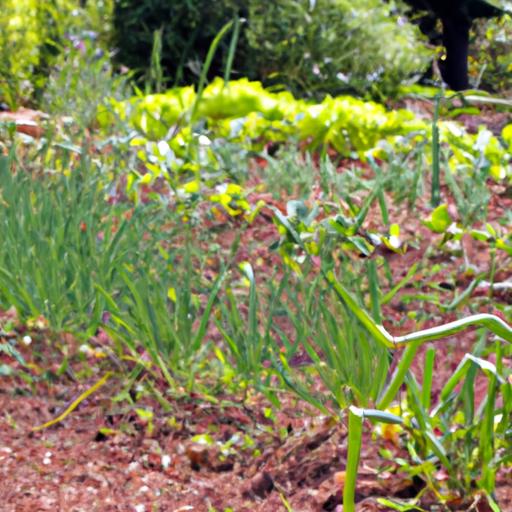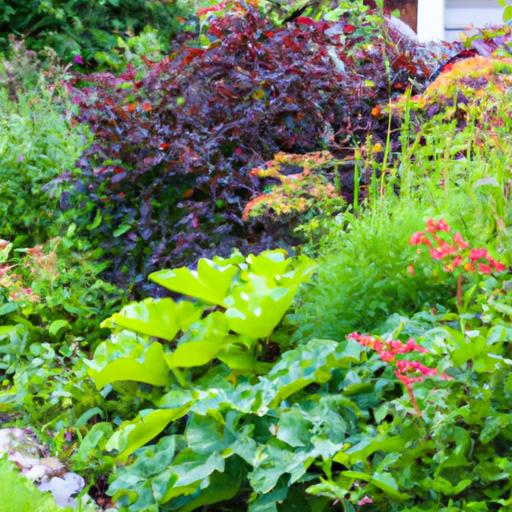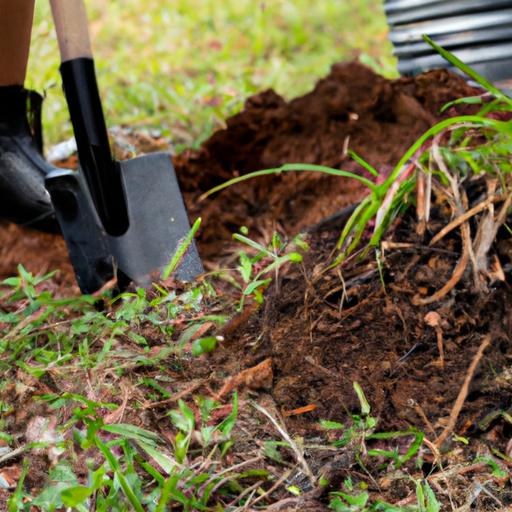Gardening is a therapeutic and rewarding activity that allows us to connect with nature and nurture beautiful plants. However, not all plants thrive in the same conditions, which is why understanding gardening zones becomes crucial. In this article, I will guide you through Michigan’s gardening zones, helping you determine the optimal zone for your green thumb aspirations.
A. Importance of knowing gardening zones
Imagine planting delicate flowers that require a warm climate in a region prone to frost, or attempting to grow tropical fruits in a location with a short growing season. Without knowledge of gardening zones, we would be setting ourselves up for disappointment and frustration. By understanding the specific zone in which we reside, we can select plants that are best suited to our climate and ensure their successful growth and survival.
B. Overview of gardening zones in the United States
The United States is a vast country with diverse climates, ranging from the sunny beaches of Florida to the snowy mountains of Alaska. To help gardeners navigate these varying conditions, the United States Department of Agriculture (USDA) has developed the Plant Hardiness Zone Map. This map divides the country into different zones based on average annual minimum temperatures, providing valuable information for gardeners across the nation.
Now, let’s delve into the specifics of Michigan’s gardening zone and explore how it can guide our plant selection and gardening practices.
Understanding Gardening Zones
Gardening zones play a pivotal role in determining the types of plants that will thrive in a specific region. Let’s explore the different aspects of gardening zones to gain a comprehensive understanding.
A. Definition of gardening zones
Gardening zones, also known as hardiness zones, are geographical regions categorized based on their climate conditions. These zones provide valuable information about the average minimum temperatures experienced in a particular area. By identifying your gardening zone, you can select plants that are well-suited to the temperature range of your region, increasing the likelihood of successful growth and yield.
B. Factors influencing gardening zones
Several factors contribute to the determination of gardening zones within a specific area. These factors include average annual minimum temperatures, elevation, proximity to bodies of water, and prevailing weather patterns. Each of these elements interacts to create a unique microclimate that impacts the viability of certain plants within a given zone.
C. Importance of determining the appropriate gardening zone
Determining the appropriate gardening zone is crucial for several reasons. Firstly, it enables you to select plants that are well-adapted to your specific climate, ensuring their survival and reducing the risk of plant loss. Secondly, understanding your gardening zone allows you to make informed decisions regarding plant care, including watering, fertilizing, and pest management. Lastly, knowing your gardening zone empowers you to plan your garden effectively, optimizing space and creating a harmonious environment for plant growth.
Now that we have a solid foundation of gardening zones, let’s dive into the specifics of Michigan’s gardening zone and explore the unique characteristics of this magnificent state.
What is Michigan’s Gardening Zone?
Michigan, known as the Great Lakes State, boasts a unique climate and geography that contribute to its diverse gardening zones. Understanding Michigan’s gardening zone is essential for selecting the right plants and ensuring their successful growth. Let’s explore the factors that determine Michigan’s gardening zone and how you can determine which zone you fall into.
A. Introduction to Michigan’s climate and geography
Michigan experiences a continental climate, characterized by hot summers and cold winters. However, the proximity to the Great Lakes influences the state’s climate, moderating temperature extremes and creating microclimates in certain areas. The Upper Peninsula, for instance, tends to have cooler temperatures and receives more snowfall compared to the Lower Peninsula.
The diverse geography of Michigan also plays a role in its gardening zones. From the sandy beaches along the shores of Lake Michigan to the rolling hills of the Irish Hills region, the state offers a range of landscapes that contribute to variations in microclimates.
B. Explanation of the USDA Plant Hardiness Zone Map
The USDA Plant Hardiness Zone Map is a valuable tool for gardeners in determining their specific gardening zone. It divides the United States into different zones based on the average annual minimum temperatures. Each zone represents a 10°F difference in average minimum temperature from the adjacent zones.
C. Determining the gardening zone in Michigan
To determine your gardening zone in Michigan, you can refer to the USDA Plant Hardiness Zone Map. The map assigns different zones to different parts of the state based on their average minimum temperatures. By locating your area on the map, you can identify the corresponding gardening zone and gain insights into the types of plants that are most likely to thrive in your region.
In the next section, we will explore how Michigan’s gardening zones influence plant selection and delve into the recommended plants for each zone. So, let’s continue our journey towards gardening success in Michigan!
Michigan’s Gardening Zones and Plant Selection
Michigan’s diverse climate and geography give rise to different gardening zones across the state. Understanding the specific considerations, recommended plants, as well as the challenges and opportunities within each zone, will greatly contribute to your gardening success.
A. Planting considerations for different zones in Michigan
When it comes to gardening in Michigan, it’s essential to take into account the specific conditions of your gardening zone. Factors such as average temperatures, frost dates, and soil composition play a significant role in determining which plants will thrive in your area. For instance, if you reside in the southern parts of the Lower Peninsula, you may experience milder winters and a longer growing season compared to the Upper Peninsula.
To ensure success, consider the hardiness of plants and their ability to withstand the temperatures and conditions of your particular zone. Additionally, evaluate sunlight exposure, soil drainage, and any microclimates within your garden space. By understanding these planting considerations, you can make informed decisions and create an environment that promotes the growth and health of your chosen plants.
B. Recommended plants for each gardening zone
Michigan’s gardening zones present a wide array of plant options, ranging from hardy perennials to vibrant annuals. Here are some recommended plants for each gardening zone:
Zone 3
- Siberian iris (Iris sibirica)
- Purple coneflower (Echinacea purpurea)
- Northern sea oats (Chasmanthium latifolium)
Zone 4
- Hosta (Hosta spp.)
- Daylilies (Hemerocallis spp.)
- Black-eyed Susan (Rudbeckia hirta)
Zone 5
- Hydrangea (Hydrangea macrophylla)
- Bee balm (Monarda didyma)
- Japanese maple (Acer palmatum)
Zone 6
- Peony (Paeonia spp.)
- Hollyhock (Alcea rosea)
- Coneflower (Echinacea spp.)
C. Challenges and opportunities in specific gardening zones
Each gardening zone in Michigan offers unique challenges and opportunities for gardeners. Understanding these factors can help you adapt your gardening practices and maximize your chances of success. For instance, Zone 3 gardeners may face shorter growing seasons and harsher winters, but they can also take advantage of cold-tolerant crops and the beauty of frost-resistant flowers.
In contrast, Zone 6 gardeners enjoy longer growing seasons and milder winters, providing more opportunities for a wider range of plants. However, they must also be mindful of potential pest and disease issues due to the favorable conditions. By recognizing the challenges and opportunities within your specific gardening zone, you can plan accordingly and make the most of your gardening endeavors in Michigan.
Remember, selecting plants that are well-suited to your gardening zone will save you time, effort, and disappointment. With careful consideration of planting factors, knowledge of recommended plants, and an understanding of the challenges and opportunities within each zone, you’ll be well on your way to creating a thriving garden in Michigan.
Tips for Successful Gardening in Michigan
Understanding Michigan’s Growing Season
Michigan’s growing season is influenced by its unique climate, characterized by cold winters and warm summers. To maximize your gardening success, it is essential to understand the length of the growing season in your specific gardening zone. Generally, the growing season in Michigan ranges from late April to early October, but this can vary depending on your location within the state.
Consider factors such as the average date of the last frost in spring and the first frost in fall. These dates can help you determine when it’s safe to plant delicate seedlings or when it’s time to harvest your crops before the first frost arrives. Keep track of your local weather patterns and consult gardening resources to gain insights into the optimal timing for planting and harvesting in your zone.
Soil Preparation and Amendments
Healthy soil is the foundation of a thriving garden, and Michigan gardeners can benefit from proper soil preparation and amendments. Conduct a soil test to assess its pH level and nutrient content. Michigan soils tend to be slightly acidic, so it’s often necessary to raise the pH by adding agricultural lime. Additionally, enrich the soil with organic matter, such as compost or well-rotted manure, to improve its structure and fertility.
Before planting, ensure the soil is well-draining to prevent waterlogged roots. Incorporate organic matter into the soil to enhance its ability to hold moisture while allowing excess water to drain away. Regularly replenish organic matter throughout the growing season to maintain soil health and provide essential nutrients to your plants.
Watering, Fertilizing, and Mulching Techniques
Proper watering, fertilizing, and mulching are vital components of successful gardening in Michigan. Water deeply and infrequently, allowing the soil to dry out slightly between watering sessions. This encourages plants to develop deep root systems, making them more resilient to drought conditions. Mulching around plants helps retain soil moisture, suppresses weeds, and regulates soil temperature.
When it comes to fertilizing, choose organic options to promote long-term soil health. Apply a balanced fertilizer during the growing season, following package instructions for dosage and frequency. Additionally, consider using organic compost or compost tea as a natural and nutrient-rich alternative.
Pest and Disease Management Strategies
Michigan’s diverse climate creates an environment conducive to various pests and diseases. To protect your garden, implement proactive pest and disease management strategies. Regularly inspect your plants for signs of pests or diseases, such as discoloration, wilting, or pest activity. Early detection allows for prompt intervention and minimizes damage.
Encourage beneficial insects, like ladybugs and lacewings, by planting flowers that attract them. Implement companion planting techniques to naturally repel pests or attract beneficial insects. If necessary, utilize organic pest control methods, such as neem oil or insecticidal soaps, to control infestations without harming beneficial insects or the environment.
By understanding Michigan’s growing season, preparing the soil, implementing proper watering and fertilizing techniques, and implementing effective pest and disease management strategies, you’ll be well-equipped to create a flourishing garden in the Great Lakes State. Stay tuned for the next section, where we’ll explore the specific gardening zones in Michigan and the ideal plant selection for each zone.
Tips for Successful Gardening in Michigan
Michigan’s unique climate and geography offer both challenges and opportunities for gardeners. To ensure gardening success in the Great Lakes State, here are some valuable tips tailored to Michigan’s gardening zones.
A. Understanding Michigan’s growing season
Michigan experiences a relatively short growing season due to its northern location. It is crucial to familiarize yourself with the average first and last frost dates in your specific gardening zone. By knowing the length of your growing season, you can plan accordingly and select plants that can mature within that timeframe.
B. Soil preparation and amendments
Healthy soil is the foundation of a thriving garden. Before planting, assess your soil’s composition and make necessary amendments. Michigan soils are often acidic, so adding organic matter like compost or well-rotted manure can improve fertility and pH levels. Conduct a soil test to determine nutrient deficiencies and adjust accordingly with organic or slow-release fertilizers.
C. Watering, fertilizing, and mulching techniques
Proper watering and fertilizing are vital for plant health. In Michigan, regular rainfall is typically sufficient, but during dry spells, supplemental watering may be necessary. Water deeply and infrequently to encourage deep root growth. Applying a layer of organic mulch around plants helps retain moisture, suppress weeds, and regulate soil temperature.
D. Pest and disease management strategies
Michigan is home to various pests and diseases that can affect your garden. Regularly inspect your plants for signs of infestation or disease, and promptly address any issues. Utilize organic pest control methods such as hand-picking pests, introducing beneficial insects, or using horticultural oils. Additionally, practicing crop rotation and maintaining good garden hygiene can help minimize the risk of disease outbreaks.
By following these tips, you can maximize your gardening success in Michigan’s diverse climate. Remember, gardening is an ever-evolving journey, so don’t be afraid to experiment, learn from your experiences, and adapt your practices to suit your specific gardening zone.
Now that you’re equipped with the knowledge of Michigan’s gardening zones and essential gardening tips, it’s time to get your hands dirty and create your own green oasis in the Great Lakes State!




